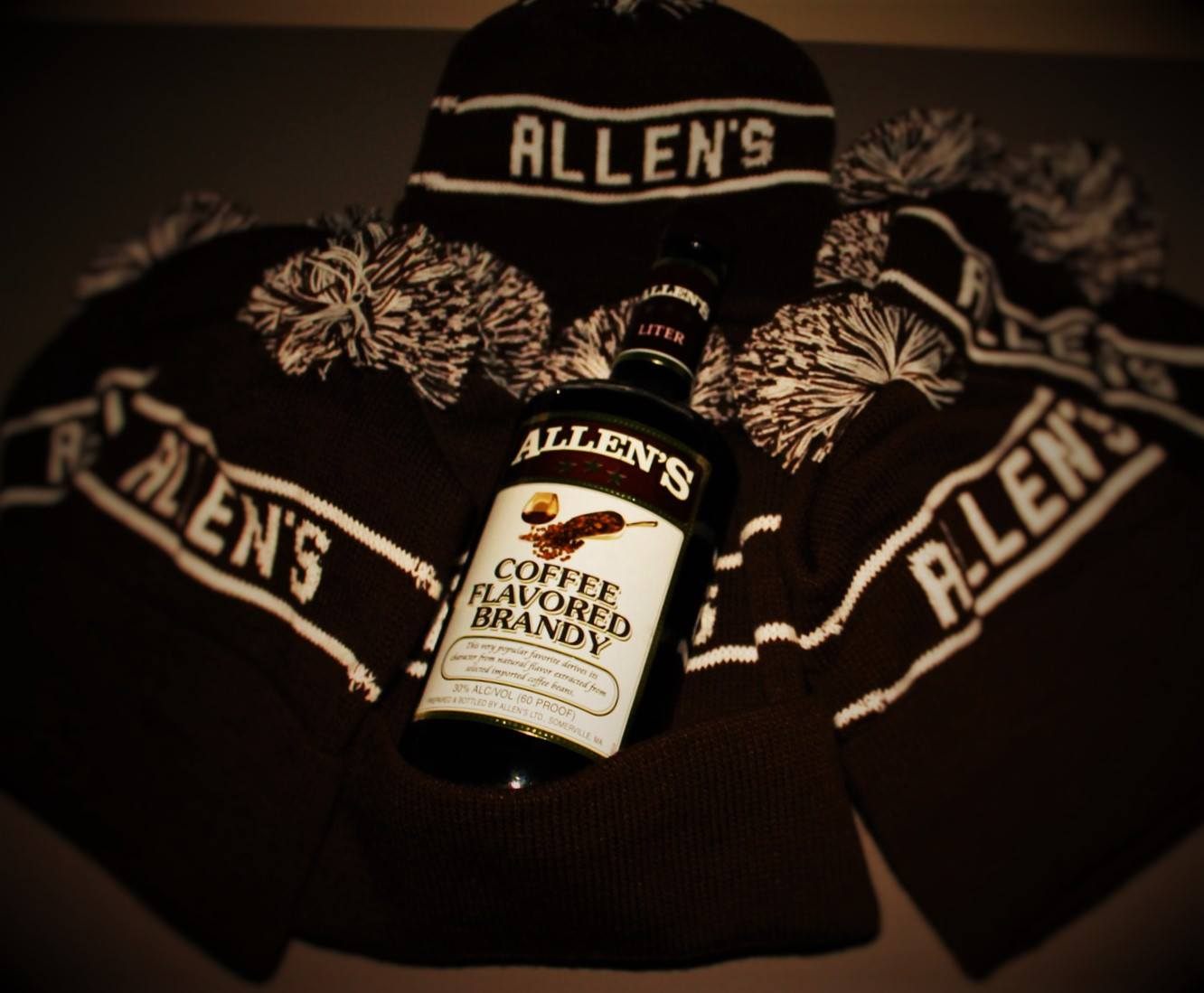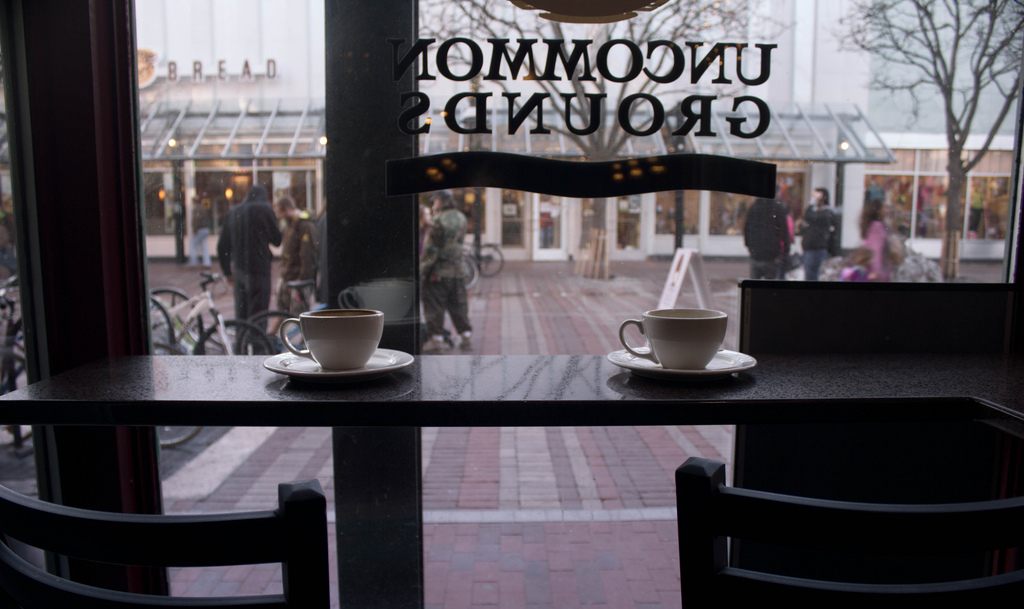Why Maine Is Mad for This Coffee-Flavored Liqueur
Allen’s Coffee Brandy is more popular than vodka or whiskey.

Maine, unlike most states, is a “control state,” meaning the state government maintains some level of monopolistic control over the distribution and/or sale of alcohol. What this also means is that Maine has extremely precise records of exactly what Mainers are drinking. It’s how we know that of the 10 most popular bottles of alcohol sold in the state in 2016, three of them are just different sizes of the same booze.
It would be reasonable to expect that brand to be, say, Jack Daniels or Smirnoff or Bacardi, something like that. It’s not. The most popular liquor in Maine by an extremely large margin—nearly two-and-a-half times as popular as the second-most, in terms of number of cases sold—is a coffee-flavored liqueur called Allen’s Coffee Brandy.
Allen’s is not a brandy, exactly; strictly speaking, a brandy is a spirit made by distilling wine. Allen’s is technically a liqueur, a neutral grain spirit like Everclear that’s been mixed with flavorings and sugar. Coffee-flavored liqueurs are not particularly popular in most of the U.S. In other control states, like Oregon and Pennsylvania, the only liqueur to make the top 10 list during the last two years is Fireball, a cinnamon-whiskey liqueur (it ranks fourth in Maine).
Even weirder, Allen’s isn’t even from Maine—it’s produced in Massachusetts, just outside Boston. And yet, the manufacturer tells me, 85 percent of the Allen’s they produce is sold in Maine. So why is a Massachusetts-produced coffee liqueur more popular in Maine than any vodka or whiskey?
“It very much started, as the lore goes—and there’s always stories told about cocktails that aren’t really verifiable because people are drinking and not writing stuff down—that Allen’s started as something the lobstermen would take out with them and put in their coffee as they went out on the water at three, four in the morning,” says Andrew Volk, the owner of Portland Hunt and Alpine Club, a cocktail bar in Portland, Maine, that uses Allen’s in some of its signature drinks.
M.S. Walker, the parent company of Allen’s, is a wholesale distributor that started making its own liquors shortly after it was founded in 1933. Allen’s, as a brand, was created “in the late 1960s,” according to an email sent to me by an M.S. Walker representative. “Our founder Maurice Walker’s daughter Ruth married Leo Allen—and Allen’s brand was born,” he writes. It’s made of a neutral citrus-based liqueur, mixed with coffee extract.

Allen’s is rarely drunk straight. Much more common is either to pour some into a cup of coffee, or to mix with milk in a pint glass over ice. The latter can be ordered in any of several ways. “Allen’s and milk” would be pretty standard, but other names, like “fat ass in a glass,” “moose milk,” “sombrero,” “leg spreadah,” or any of a dozen more creative options can be heard throughout the state. My favorite is “lily of the tundra,” a riff on the lily-of-the-valley, a flower native to northern Europe. The lily-of-the-valley is pretty and smells intoxicatingly sweet, but it’s also incredibly poisonous.
Allen’s is very sweet and lightly caffeinated, with a bitter taste of burnt coffee. “It’s made inexpensively, not made to be consumed on its own,” says Volk. “There’s a funny copper edge to it on the finish, but that’s why it’s something you mix with milk or coffee, something to coat your palate and cover up that funny aftertaste.” Allen’s costs about nine dollars for a 1.75 liter bottle. At 30 percent alcohol by volume, it’s not quite as strong as whiskey or vodka, but it’s not that far off. “Anybody that grew up in Maine knows Allen’s, anybody that moves here quickly discovers Allen’s. It’s a part of the cultural tapestry of Maine,” says Volk.
There are pockets around the world where a particular unusual liqueur, like Vana Tallinn in Estonia, takes the place of dirt-cheap vodka or malt liquor as a go-to cheap buzz. It’s the combination of the low price and the particular sway that coffee has over New England that’s allowed Allen’s to become such a major seller in Maine.
“New England in general I think has a real thing for wonderfully strong, mediocre coffee, and I think the obsession with Dunkin [Donuts] highlights that,” says Volk. A Men’s Health ranking from 2014 measured variables like the amount of money a household spent on coffee, number of coffee shops per capita, and percentage of people who drink more than five cups a day in order to find the most “coffee-obsessed” cities in the U.S. The top three, in ascending order, were Burlington, Vermont; Manchester, New Hampshire; and Portland, Maine. Seattle ranked ninth.
It’s tricky to explain exactly why New Englanders drink so much coffee. One reason might be that winter in Maine lasts about seven months, and it’s nice to have something warm to drink. There’s also the possible influence of a Puritan, blue-collar work ethic. Coffee is a beverage you drink to get things done; it is not, at least in New England, an occasion to sit around and chat, the way tea is in the Commonwealth of Nations. Coffee is an indicator of work.

As with any cheap, popular alcohol, there are horror stories associated with Allen’s. After the Four Loko controversy in 2010, Allen’s quickly dismissed any accusations that it, too, is a dangerous caffeinated drink—the caffeine level in Allen’s is likely pretty low—but it still pops up in crimes across the state. Most, though, argue that Allen’s simply happens to be popular, that there’s nothing in particular about it that’s dangerous.
Allen’s hasn’t been reclaimed by the new breed of mixologists in any substantial numbers, really. Volk is one of the few using it in modern cocktails in Maine. “From kind of the cocktail geek, cocktail bartender perspective, you can treat it like any other coffee liqueur out there,” he says. “It just has this cultural background to it, this ingrained history in Maine.” The Hunt and Alpine Club serves a version of a revolver, a cocktail consisting of bourbon and coffee liqueur, with Allen’s, as well as a coffee martini (cold brew coffee concentrate from local coffee shop Tandem, run, and Allen’s) that’s always on the menu. “For us it’s not like oooh, let’s play with this thing—it’s not at all a joke,” says Volk. “It’s a good product, there’s this cool connection to it, we’re happy to serve it.”








Follow us on Twitter to get the latest on the world's hidden wonders.
Like us on Facebook to get the latest on the world's hidden wonders.
Follow us on Twitter Like us on Facebook